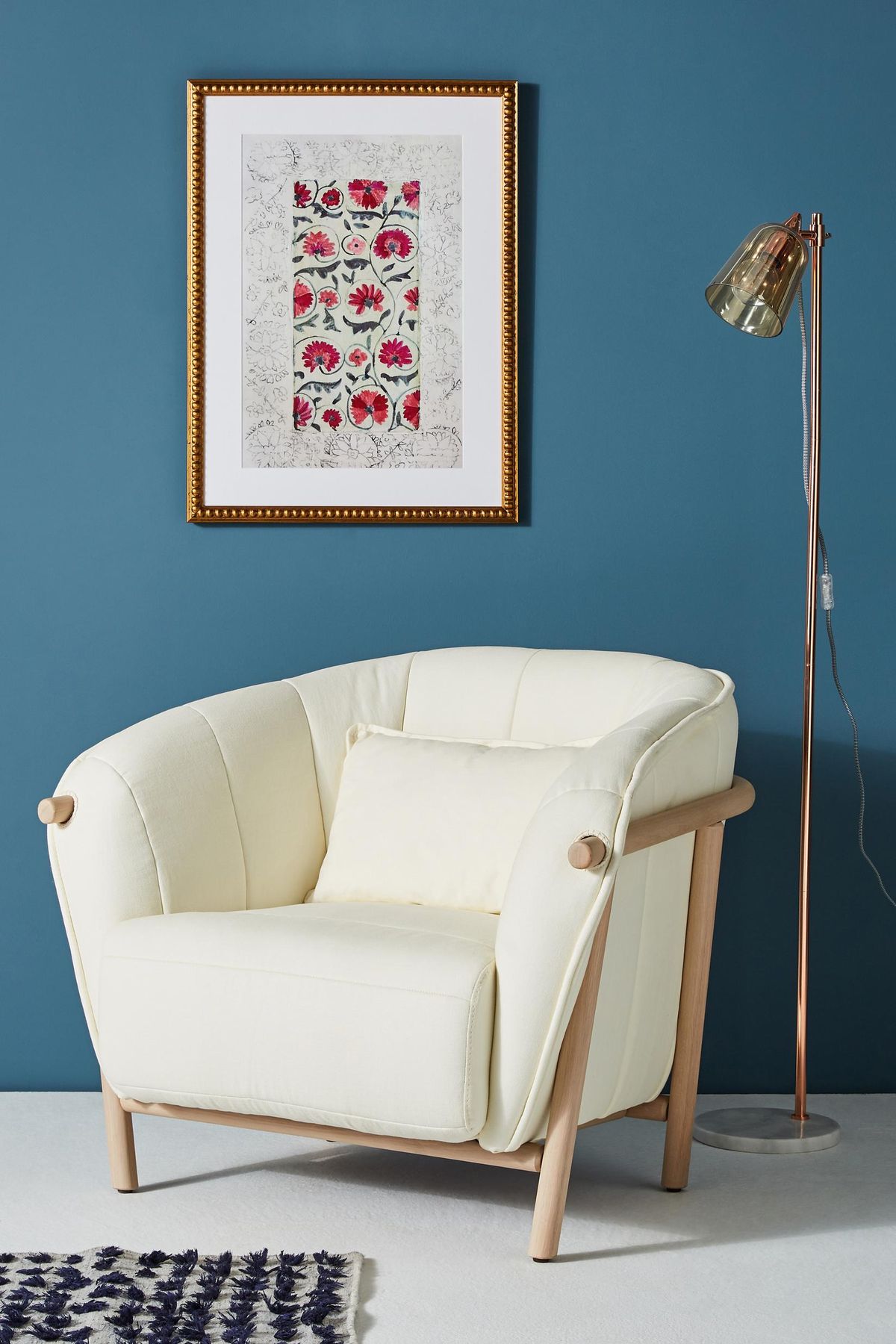Suzani style: Persian quilt design is having a moment in the U.S. – and not just on beds

In recent months, several decorating books have been published that examine the interiors of some of the world’s most enviable stylemakers. Many of the featured projects, particularly the more bohemian ones, include an antique suzani quilt thrown over a bed, ottoman or side table, or a suzani-patterned pillow tossed on a sofa. Is the suzani a secret ingredient for stylish, free-spirited design?
Graphic, colorful and intricate, suzanis are the Central Asian equivalent of the American quilt. Although probably also made in centuries before, the oldest suzani examples we know of date to the 18th century and were typically created by women as part of their dowry. Suzanis were hand-stitched and hand-embroidered with a small tool like a crochet hook (suzan means “needle” in Persian) and were used to cover beds, tables, windows, walls and even horses. They were sometimes used as prayer mats.
With solid neutral cotton or silk backgrounds often stitched together in pieces, the defining characteristic of suzanis is their intricately embroidered or appliqued patterns – vines, leaves, flowers (especially tulips and carnations) and fruits such as pomegranates – all reminiscent of ancient Greek or Ottoman Empire designs and applied in rich colors using natural dyes made from indigo, pomegranates, walnuts and other organic sources. What makes vintage suzanis so appealing in that offbeat, bohemian kind of way, are their imperfections. Because they were handmade, the patterns often don’t line up and the stitching, while beautiful, is not always uniform.
Perhaps no one has been a greater champion of suzanis in the United States than Marian McEvoy, former editor in chief of Elle Decor and House Beautiful magazines, for whom I once worked. McEvoy, whose Hudson Valley home is featured in Miguel Flores-Vianna’s book “Haute Bohemians,” has been an avid suzani admirer since she spotted a huge specimen in Paris almost three decades ago.
Suzanis are “upbeat, folkloric, exotic and hard to ignore,” McEvoy says. They’re also incredibly versatile: ornate and fanciful, graphic and bold. McEvoy considers suzanis as much a decorative staple as toile and has thrown them over beds and on the backs of sofas, hung framed suzani fragments on her walls, and applied them to chair backs, stools or pillows. (McEvoy showed how she cut out medallions from suzani remnants and used them to update her home in her book “Glue Gun Decor.”)
Although McEvoy used to be able to buy vintage pieces for a few hundred dollars, today most 18th- and 19th-century suzanis on sites such as 1stdibs.com cost thousands of dollars. Before purchasing vintage pieces, hold them up to the light to look for holes or wear. Keep vintage suzanis away from sunlight to prevent fading.
Plenty of suzani examples can be found on eBay, but many are new. A telltale sign of newness is bright synthetic colors – lime greens, purples and pinks – that are not found in vintage pieces.
As for high-end, suzani-inspired fabric and carpet designs, there are plenty available; designers such as Madeline Weinrib have peppered their collections with the motifs.
If you are looking for affordable suzani-inspired fabrics with which to upholster furniture or make curtains and pillows, check online sources such as housefabric.com and onlinefabricstore.net. Both have multicolored designs starting around $9 a yard. Target and Pier 1 sell ready-made, suzani-inspired curtain panels and suzani-patterned kitchen items including plates and mugs. Garnet Hill and Serena & Lily have recently introduced new suzani quilt designs, and Pottery Barn and Safavieh have rugs that echo traditional patterns.
Mayhew, a “Today” show style expert and former magazine editor, is the author of “Flip! for Decorating.”